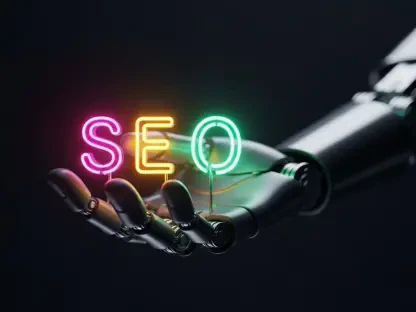As most marketers know, SEO is an important part of digital marketing. The acronym stands for search engine optimization, and it depicts a series of strategies designed to enhance the visibility of a website on search engines like Google. According to Semrush, its primary objective is to drive more organic traffic to a site. While SEO strategies have always aimed at meeting search requirements and boost traffic by using great content, the recent development of large language models (LLMs) has undoubtedly been a game-changer in the field. One important benefit of using LLMs is their capacity of generating high-quality text that is difficult to distinguish from human-written content.
Because LLMs can now generate high-quality content with ease, they could become important tools for marketers, brands, and companies hoping to improve their SEO strategies in the future. Using these Artificial Intelligence (AI) powered tools could prove fundamental for keyword research and creating good content strategies. LLMs like Chat GPT can be used to optimize the content prepared by marketers, including both existing content and creating new content. Marketers can simply upload a list of all the content available on a website and Chat GPT can tell them which topics and keywords are missing. However, the use of LLMs for SEO optimization can extend far beyond these simple strategies.
What Are LLMs and How Do They Work?
According to Techopedia, a large language model (LLM) belongs to a class of machine learning models that boast the capacity to undertake a wide array of natural language processing (NLP) tasks. These tasks include text generation, text classification, conversational question answering, and language translation, making them ideal for future content creation. The term “large” is linked to the substantial number of adjustable values or parameters within the model, which enable it to learn autonomously. Some of the most successful LLMs boast hundreds of billions of parameters.
LLMs are trained by using vast amounts of text data and AI technologies to predict the subsequent token in a sentence based on the context surrounding it. This process is repeated until the LLM achieves a satisfactory level of accuracy. In recent years, there has been substantial interest in using LLMs for content creation and other digital marketing strategies, primarily due to their remarkable capacity to produce text of exceptional quality. Notably, these models have found practical applications in search engine optimization or SEO, where they can be used to improve website rankings and refine keyword research.
Using LLMs for SEO
The primary objective of most SEO strategies is to increase the visibility of a website on various search engine results pages (SERPs). According to the LinkedIn blog, using LLMs can significantly improve these SEO strategies by:
- Generating great content that resonates with the target audience.
- Improving keyword research to enhance search engine indexing, resulting in more visibility and better ranking.
- Analyzing search intent to optimize meta tags, headers, and other on-page elements.
Senior Digital Marketing Analyst Neeraj Sharma explains that there are numerous ways of using LLMs for SEO. Among the examples he provided are:
Content Creation: LLMs can generate high-quality content for most websites. Simply inputting a topic or series of keywords can help models like Chat GPT produce informative and engaging content. This can help digital marketers save time and resources while still improving the content available on their websites.
Keyword Research: LLMs can help digital marketers identify new keywords for their brands’ websites. By providing models like Chat GPT with a topic or keyword, that model can generate a list of related keywords that marketers can then use.
Content Optimization: LLMs can help marketers improve the existing content for search engines. By analyzing the content already available on a website, the model can identify omissions and suggest modifications like incorporating additional keywords, enhancing readability, or adding more information.
User Query Responses: LLMs can also aid marketers in answering user queries and frequently asked questions. By simply providing the model with a question or query, they can make sure it delivers an informative response. This will help marketers improve the user experience on their websites.
Natural Language Processing: LLMs can also contribute to improving the natural language processing of websites. By asking the model to analyze the language available on a site, marketers can use it to identify possible improvements, such as simplifying difficult language or improving readability.
Conclusion
Most analysts are now in agreement – LLMs can be used to improve SEO strategies by generating great content, improving keyword research, and optimizing the existing content and on-page elements. However, LLMs like Chat GPT can also help provide users with better answers to their questions and improving natural language processing on brand websites. Because LLMs can be trained to learn the language and content preferences of various search engines, these models can produce content that is more likely to rank well and boost organic traffic.









